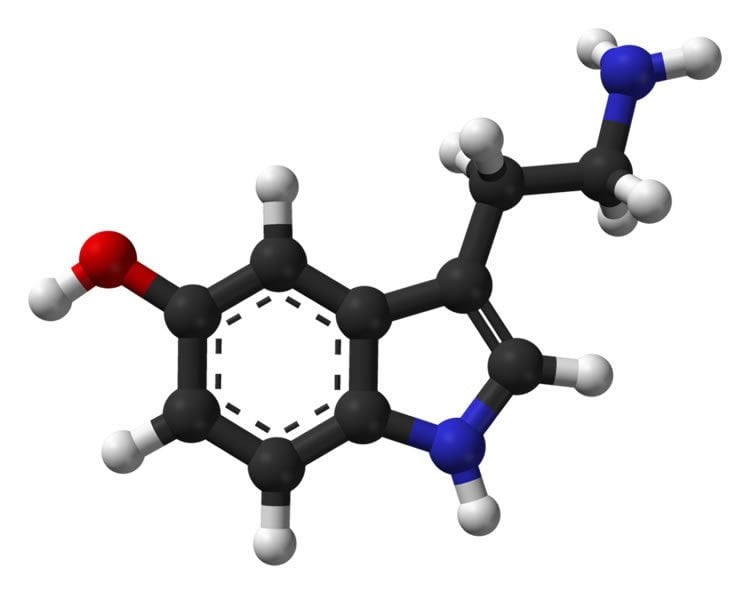Summary: A new study reports on a link between exposure to a flame retardant mixture used in foam based furniture and the disruption of normal placenta function in rats. The placental disruption alters the production of serotonin in offspring, researchers report.
Source: NC State University.
A North Carolina State University-led research team has shown a connection between exposure to a widely used flame retardant chemical mixture and disruption of normal placental function in rats, leading to altered production of the neurotransmitter serotonin. Evidence of endocrine, inflammatory and neurotransmitter signaling pathway disruption was also identified in the placentas. These data show, for the first time, that flame retardants can have sex-specific effects on placental functions critical for brain development.
FireMaster 550 (FM550) is a flame-retardant mixture used in foam-based baby products and furniture. First identified by collaborating researchers at Duke University nearly a decade ago, it was developed to replace PBDEs, a class of fire retardants being phased out of use because of safety concerns. The interuniversity research team recently demonstrated that FM 550 is an endocrine disruptor, with developmental exposure affecting anxiety- and hyperactivity-related behaviors in rats in sex-specific ways. They also showed that three of the FM 550 components dose-dependently accumulate in placenta, with levels higher in male-associated placentas.
Heather Patisaul, professor of biology at NC State, and her graduate student, Kylie Rock, wanted to know if FM 550 could sex-specifically impact the developing brain by altering placental function. They exposed pregnant female rats to 0, 300, or 1,000 micrograms of the chemical mixture per day for 10 days during gestation. The team used a variety of tools, including metabolomics and high throughput RNA sequencing, to examine the placentas and the developing brains of the offspring to identify possible pathways impacted by the chemical mixture. The dose levels used were all below the 50 milligrams per day currently considered safe.
In rat offspring exposed to 300 or 1,000 micrograms of FM550, the researchers found dose-dependent upregulation of multiple genes related to inflammatory and endocrine processes. Some were sex-specific. For example, levels of estrogen and androgen receptors were upregulated in female-associated placentas while inflammatory markers associated with increased risk of behavioral disorders were upregulated in placentas from both sexes. Additionally, the ratio of the serotonin metabolite 5-HIAA to serotonin was reduced in female placentas and fetal forebrains compared to the control group, demonstrating disruption of neurotransmitter production in the placenta and developing brain.

“We found that exposure to FM 550 can impact multiple placental pathways critical for early brain development, which is particularly concerning given that it is commonly found in baby products and furniture,” Patisaul says. “Most intriguingly, we found some evidence that placental serotonin production is altered. This is important because in early development the placenta is the sole source of serotonin for the developing forebrain.”
Collaborating efforts were led by Heather Stapleton at Duke University and Susan Sumner at UNC Chapel Hill.
Funding: The work was funded by the National Institute of Environmental Health Sciences (grants R56ES022957, P30ES025128 and T32ES021432).
Source: Heather Patisaul – NC State University
Publisher: Organized by NeuroscienceNews.com.
Image Source: NeuroscienceNews.com image is in the public domain.
Original Research: Abstract for “Molecular Effects of Developmental FM 550 Exposure in Wistar Rat Placenta and Fetal Forebrain” by Kylie R Baldwin, Brian Horman, Allison L Phillips, Susan L McRitchie, Scott Watson, Jocelin Deese-Spruill, Dereje Jima, Susan Sumner, Heather Stapleton and Heather Patisaul in Endocrine Connections. Published online January 2018 doi:10.1530/EC-17-0373
[cbtabs][cbtab title=”MLA”]NC State University “Placental Accumulation of Flame Retardant Chemical Alters Serotonin Production in Rat Offspring.” NeuroscienceNews. NeuroscienceNews, 22 January 2018.
<https://neurosciencenews.com/flame-retardant-serotonin-8340/>.[/cbtab][cbtab title=”APA”]NC State University (2018, January 22). Placental Accumulation of Flame Retardant Chemical Alters Serotonin Production in Rat Offspring. NeuroscienceNews. Retrieved January 22, 2018 from https://neurosciencenews.com/flame-retardant-serotonin-8340/[/cbtab][cbtab title=”Chicago”]NC State University “Placental Accumulation of Flame Retardant Chemical Alters Serotonin Production in Rat Offspring.” https://neurosciencenews.com/flame-retardant-serotonin-8340/ (accessed January 22, 2018).[/cbtab][/cbtabs]
Abstract
Molecular Effects of Developmental FM 550 Exposure in Wistar Rat Placenta and Fetal Forebrain
Firemaster 550 (FM 550) is a flame retardant (FR) mixture that has become one of the most commonly used FRs in foam-based furniture and baby products. Human exposure to this commercial mixture, comprised of brominated and organophosphate components, is widespread. We have repeatedly shown that developmental exposure can lead to sex-specific behavioral effects in rats. Accruing evidence of endocrine disruption and potential neurotoxicity have raised concerns regarding the neurodevelopmental effects of FM 550 exposure, but the specific mechanisms of action remains unclear. Additionally, we observed significant, and in some cases sex-specific, accumulation of FM 550 in placental tissue following gestational exposure. Because the placenta is an important source of hormones and neurotransmitters for the developing brain, it may be a critical target of toxicity to consider in the context of developmental neurotoxicity. Using a mixture of targeted and exploratory approaches, the goal of the present study was to identify possible mechanisms of action in the developing forebrain and placenta. Wistar rat dams were orally exposed to FM 550 (0, 300, or 1,000 µg/day;) for 10 days during gestation and placenta and fetal forebrain tissue collected for analysis. In placenta, evidence of endocrine, inflammatory, and neurotransmitter signaling pathway disruption was identified. Notably, 5-HT turnover was reduced in placental tissue and fetal forebrains indicating that 5-HT signaling between the placenta and the embryonic brain may be disrupted. These findings demonstrate that environmental contaminants, like FM 550, have the potential to impact the developing brain by disrupting normal placental functions.
“Molecular Effects of Developmental FM 550 Exposure in Wistar Rat Placenta and Fetal Forebrain” by Kylie R Baldwin, Brian Horman, Allison L Phillips, Susan L McRitchie, Scott Watson, Jocelin Deese-Spruill, Dereje Jima, Susan Sumner, Heather Stapleton and Heather Patisaul in Endocrine Connections. Published online January 2018 doi:10.1530/EC-17-0373






